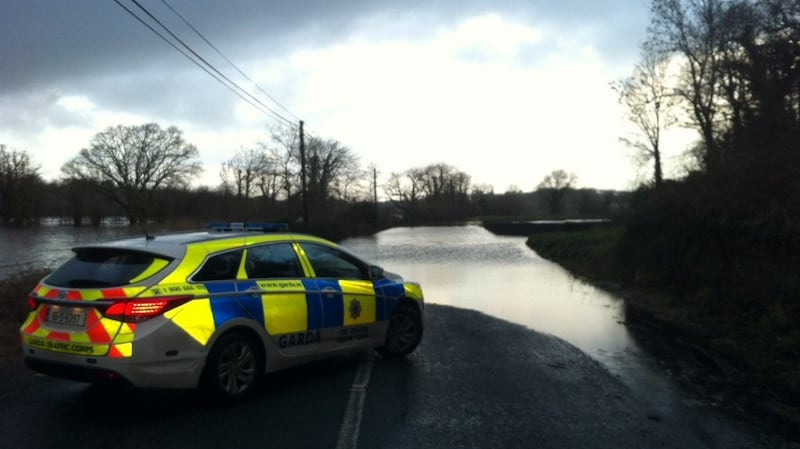Further heavy rain is forecast across the country on Sunday with many counties bracing themselves for rising river levels and flooding.
The status yellow rainfall warning for Cork and Kerry has been removed by Met Eireann, after originally being set to last until midnight on Sunday.
There is a boil water notice in place which affects over 10,000 people in Whitegate, Co Cork due to the bad weather.

Heavy rainfall and flooding have compromised many water treatment plants across the country. The situation is being monitored closely by the HSE, who advise on boil notices, according to a spokesperson for Irish Water.
Also in Co Cork, Carrigrohane Road and Lee Road will remain closed on Sunday and Cork City Council is advising property owners that there will be continuing difficulties in accessing their homes.
The ESB will continue to discharge waters from Inniscarra Dam at rates of up to 250 cumecs.
Cork City Council is also preparing for further flooding in the Carrigrohane Road and Lee Road areas.
The Cork Flood Assessment Team will keep matters under review over the coming days.
Clonmel
Water levels on the River Suir in Clonmel, Co Tipperary have stabilised overnight, with Tipperary County Council saying rainfall had not materialised to the level which they had expected. The situation is being monitored.
A number of homes in the Kilganey area of Clonmel were evacuated on Saturday night amid fears the river would burst its banks.
Fine Gael Councillor Michael Murphy explained houses were being evacuated because if the river did exceed the 4 metre level it would make it almost impossible to access the houses.
Speaking to Today fm, the councillor also said a number of the residents are refusing to leave their homes.
In Carrick-on-Suir, additional pumps have been deployed to manage rising water levels on the North Quay.
River Shannon
In Limerick, water levels on the Lower River Shannon at Castleconnell have increased by half an inch overnight and the council has deployed additional pumps to the area.
Water levels on the Mulkear River have since dropped to 2.7metres, with previously flooded roads now reopened.
In Athlone the River Shannon has now risen 3cm above the maximum level reached in 2009 and is putting increasing pressure on defences in the town and the rural areas.
Westmeath County Council says the flood defences within Athlone are withstanding the rising water levels and pumping is ongoing.
Houses in an estate in Co Offaly have been evacuated after the ESB cut power supply for safety reasons.
While the Shannon remains “slightly” below record 2009 levels in Offaly, ten houses have now flooded in the county. The flooded properties are located at Shannon Harbour, Banagher, Gallen, Cush and Killaghintober.
In the past 24 hours the ESB cut the power supply to parts of Banagher’s Portavolla estate.
Offaly County Council said “most households have voluntarily evacuated due to the lack of power supply and flooding of their boiler houses, but water has not actually entered any of the houses.”
Power was also cut off in parts of Shannonbridge over safety fears due to the rising water levels.
The council has said the major flooding issues in the county remain within the catchment of the River Shannon and River Brosna.
Water levels on the Lower River Shannon at Springfield, Clonlara in Co Clare dropped slightly overnight, while eight houses in Springfield remain isolated by floodwaters.
Simon Coveney, Minister for Agriculture and for Defence, will visit Springfield on Sunday.
The ESB confirmed it will continue to maintain the spill rate at Parteen Weir at 470 cumecs on Sunday.
At a briefing of the Emergency committee on Saturday, Jim Casey of the Office of Public Works said over the past 48 hours water levels had increased in the rivers Shannon, Blackwater, Erne, Nore, Suir, Barrow, Slaney and Clare.
Shortly after 5pm on Saturday the ESB warned of the potential for flooding in the River Liffey catchment due to an increase in the amount of water being released from the Pollaphuca reservoir.
It said Kilcullen, Clane, Newbridge, Straffan and Celbridge were particularly at risk.









